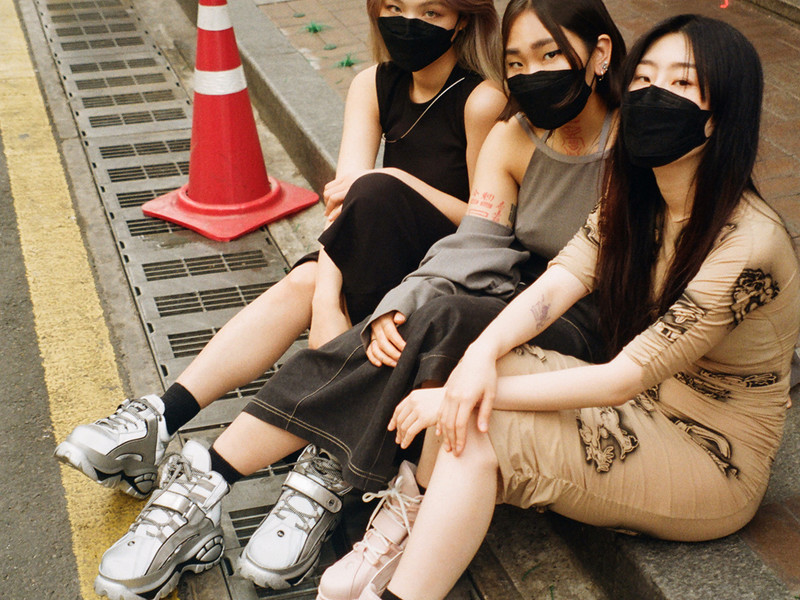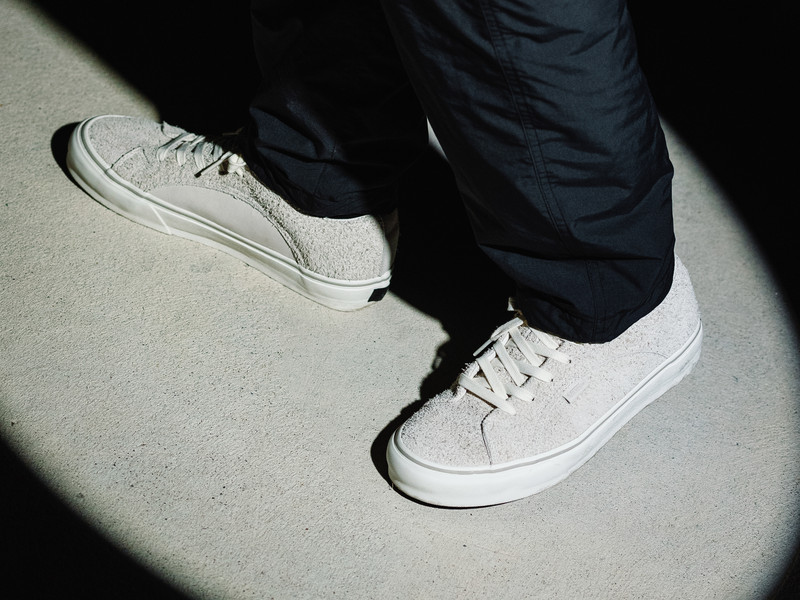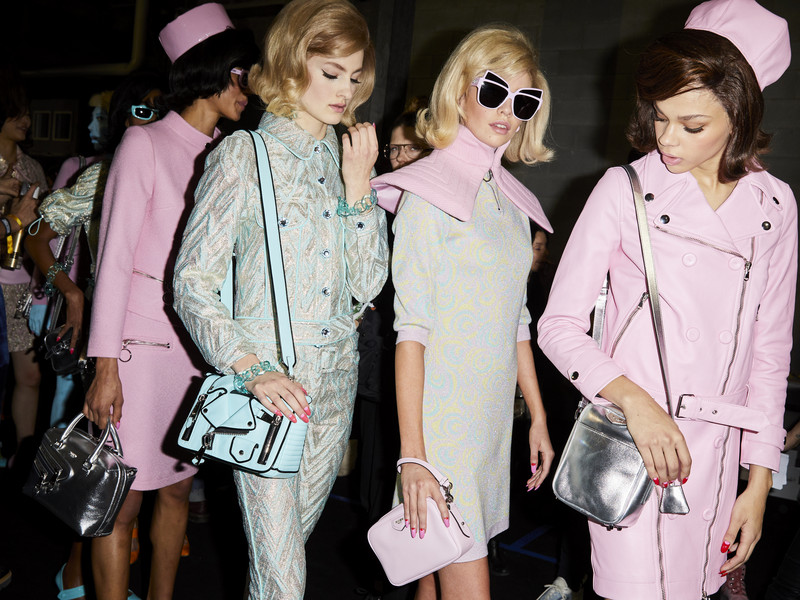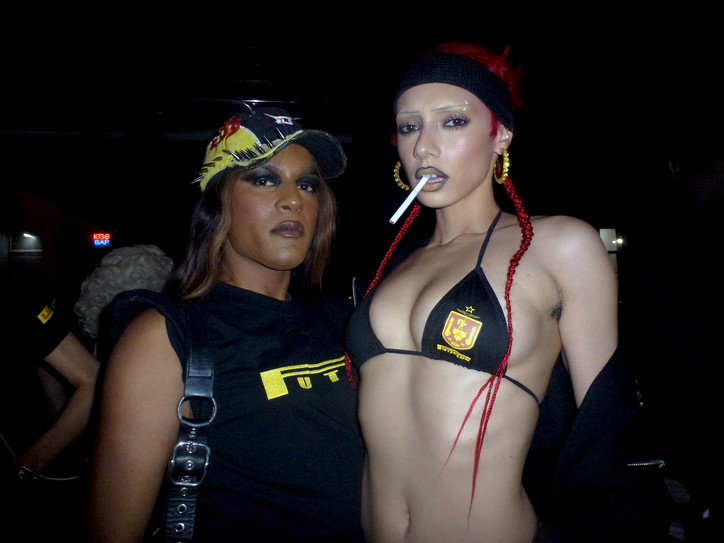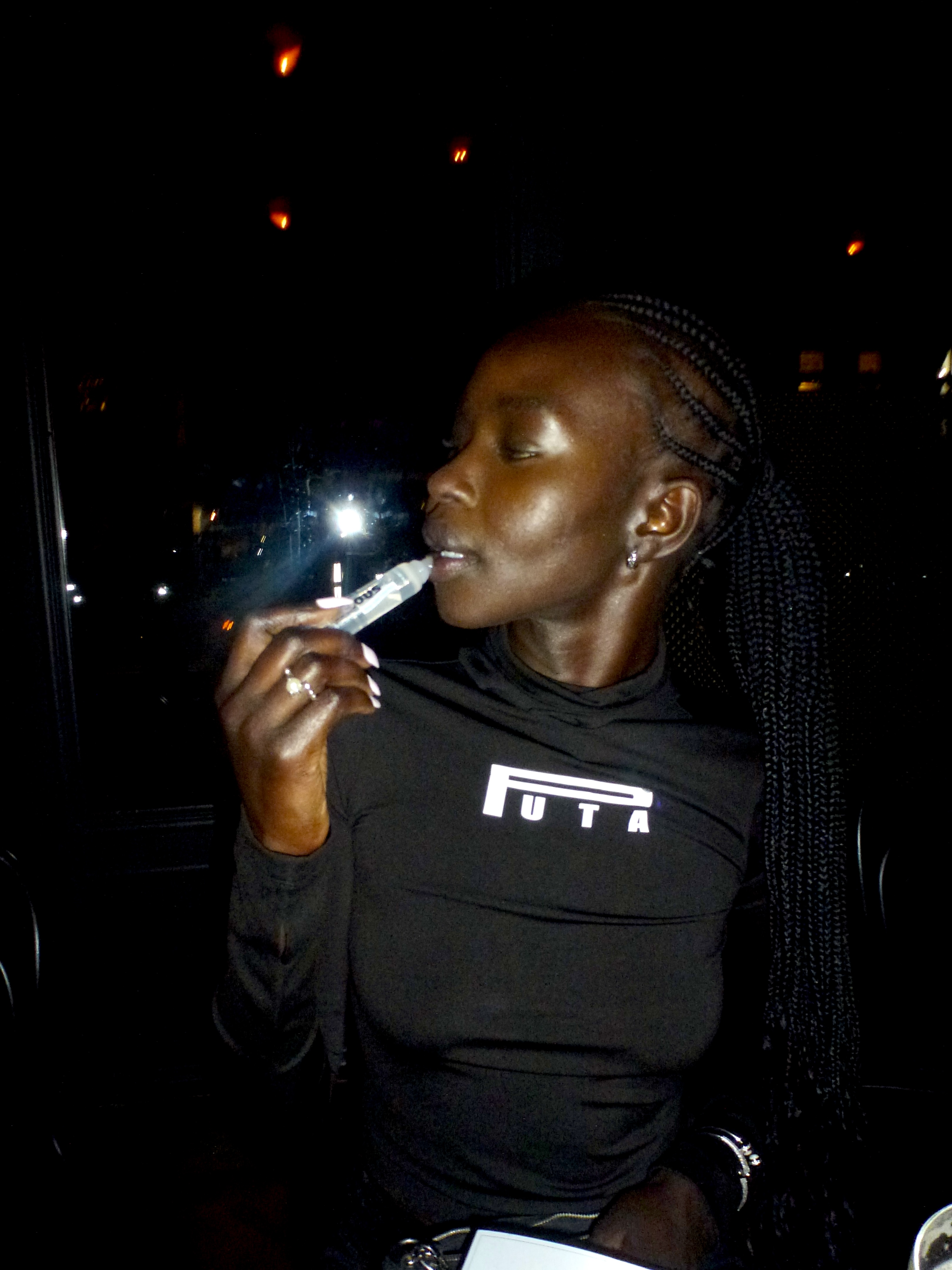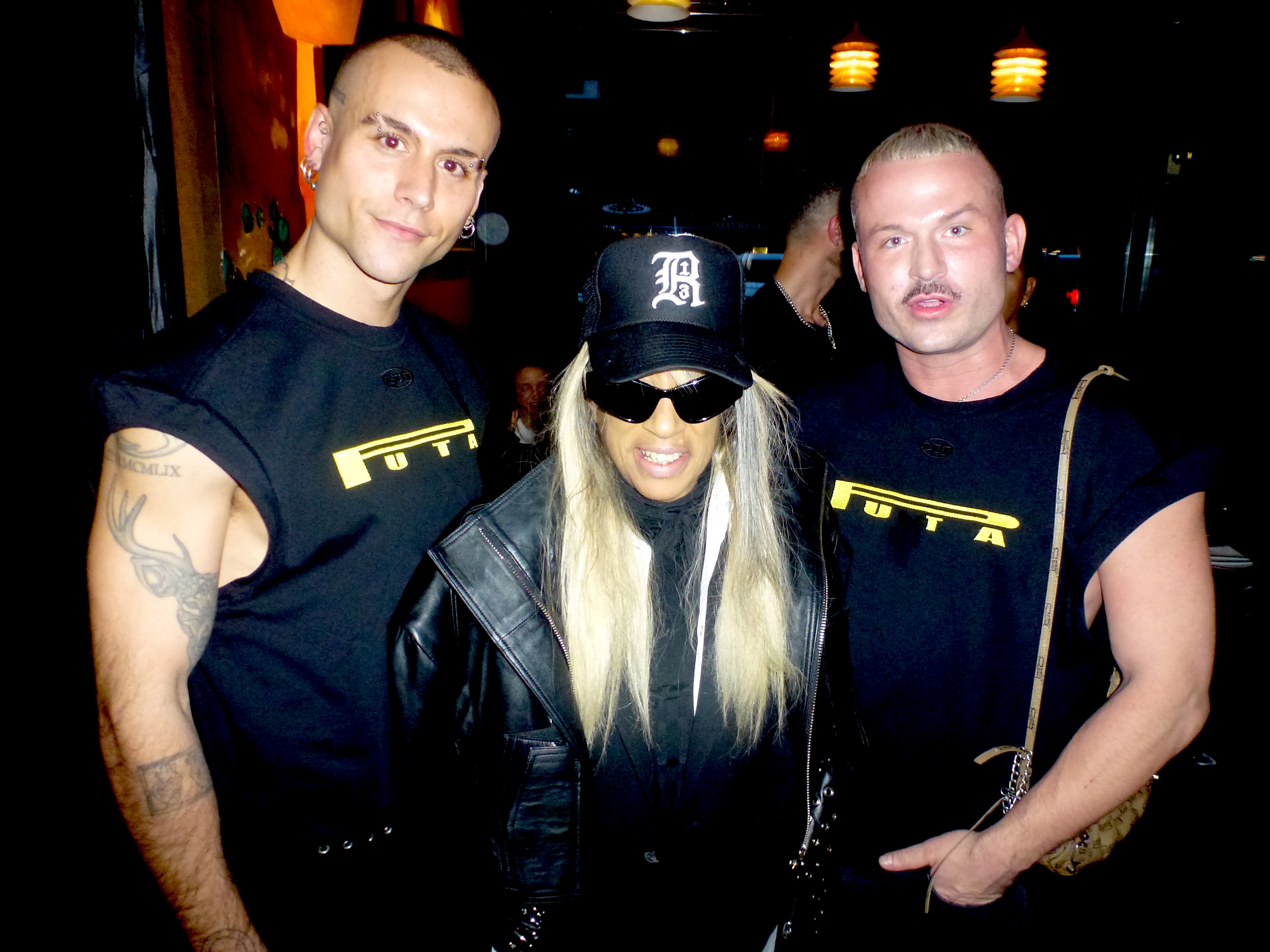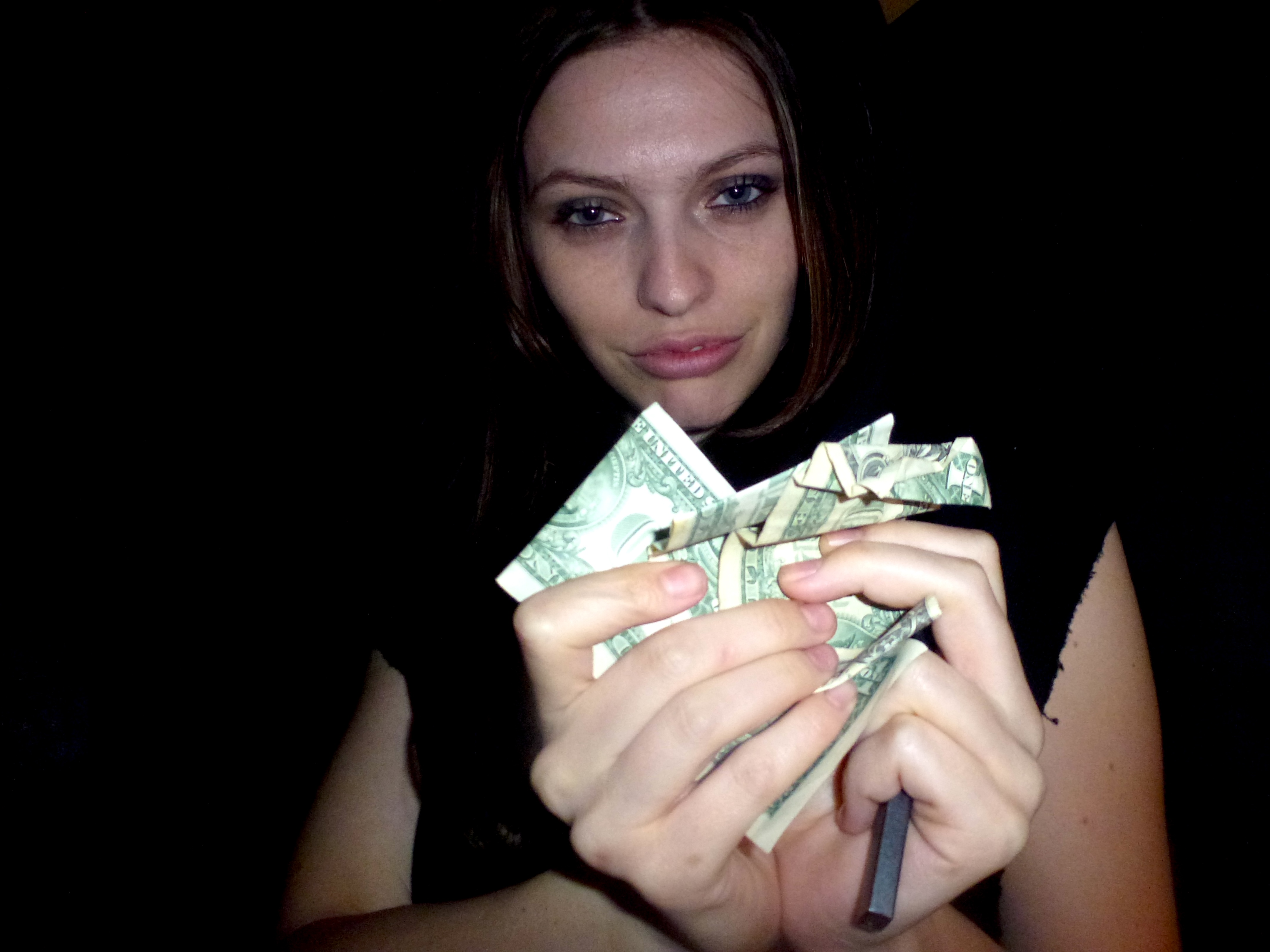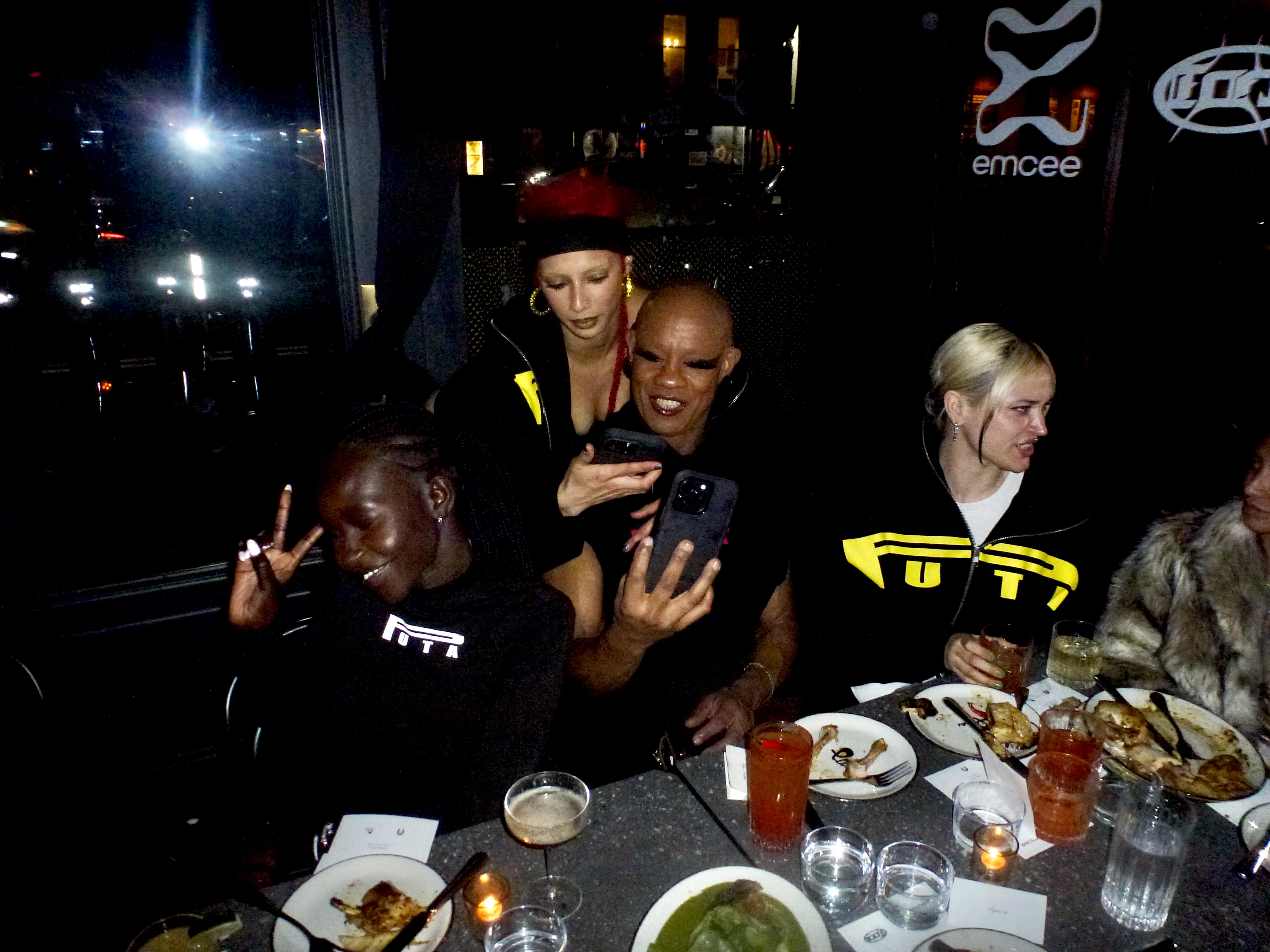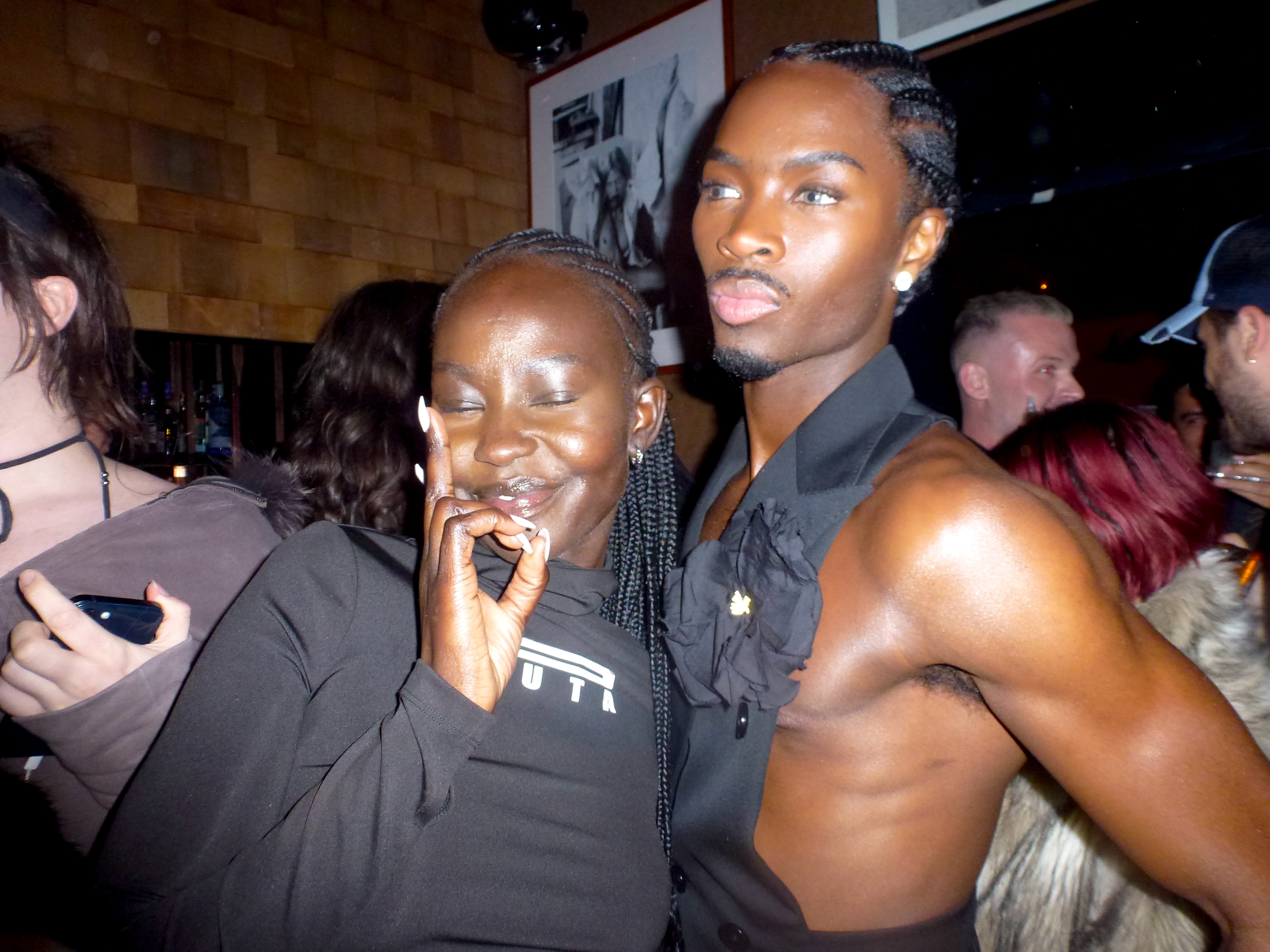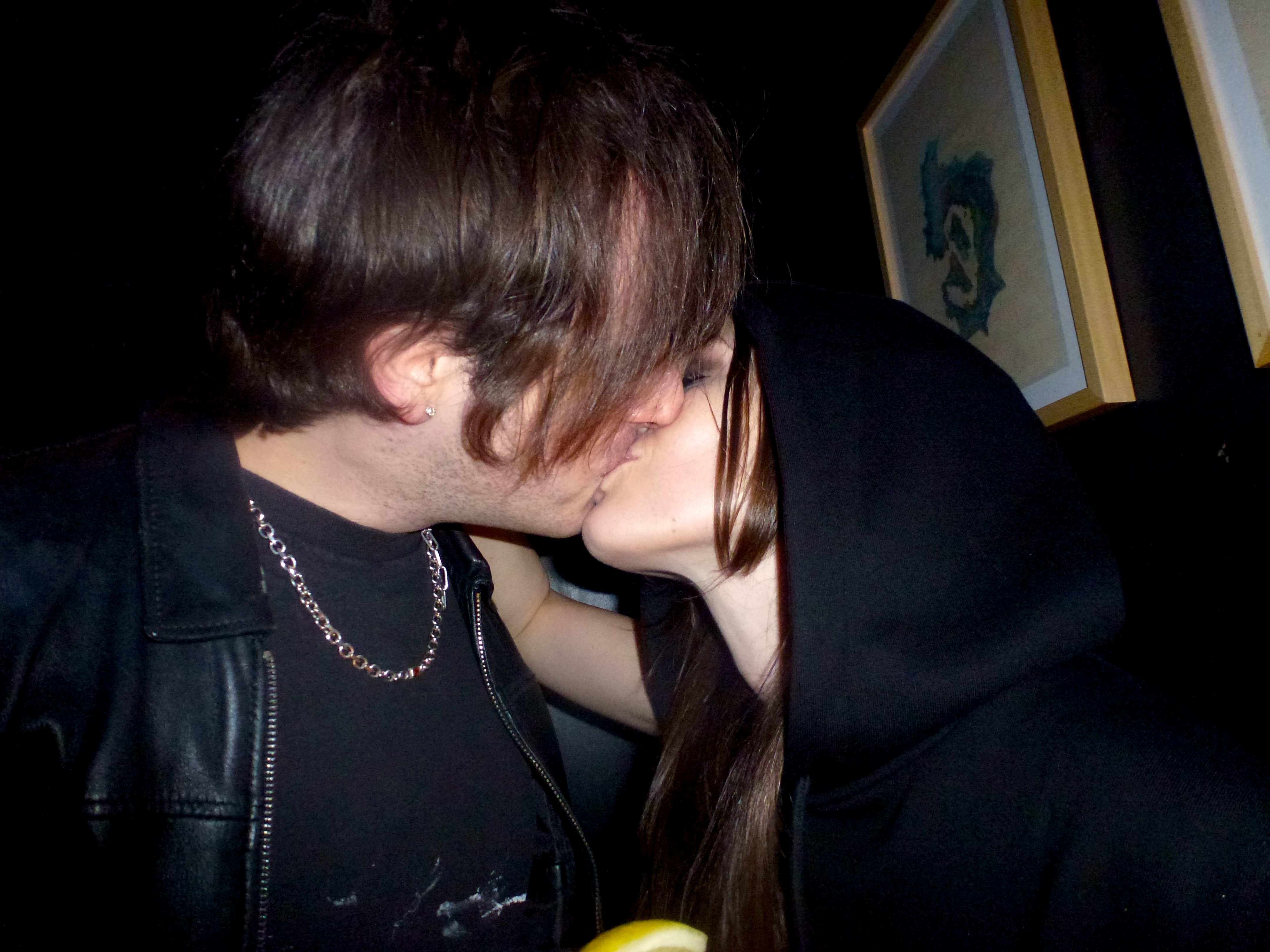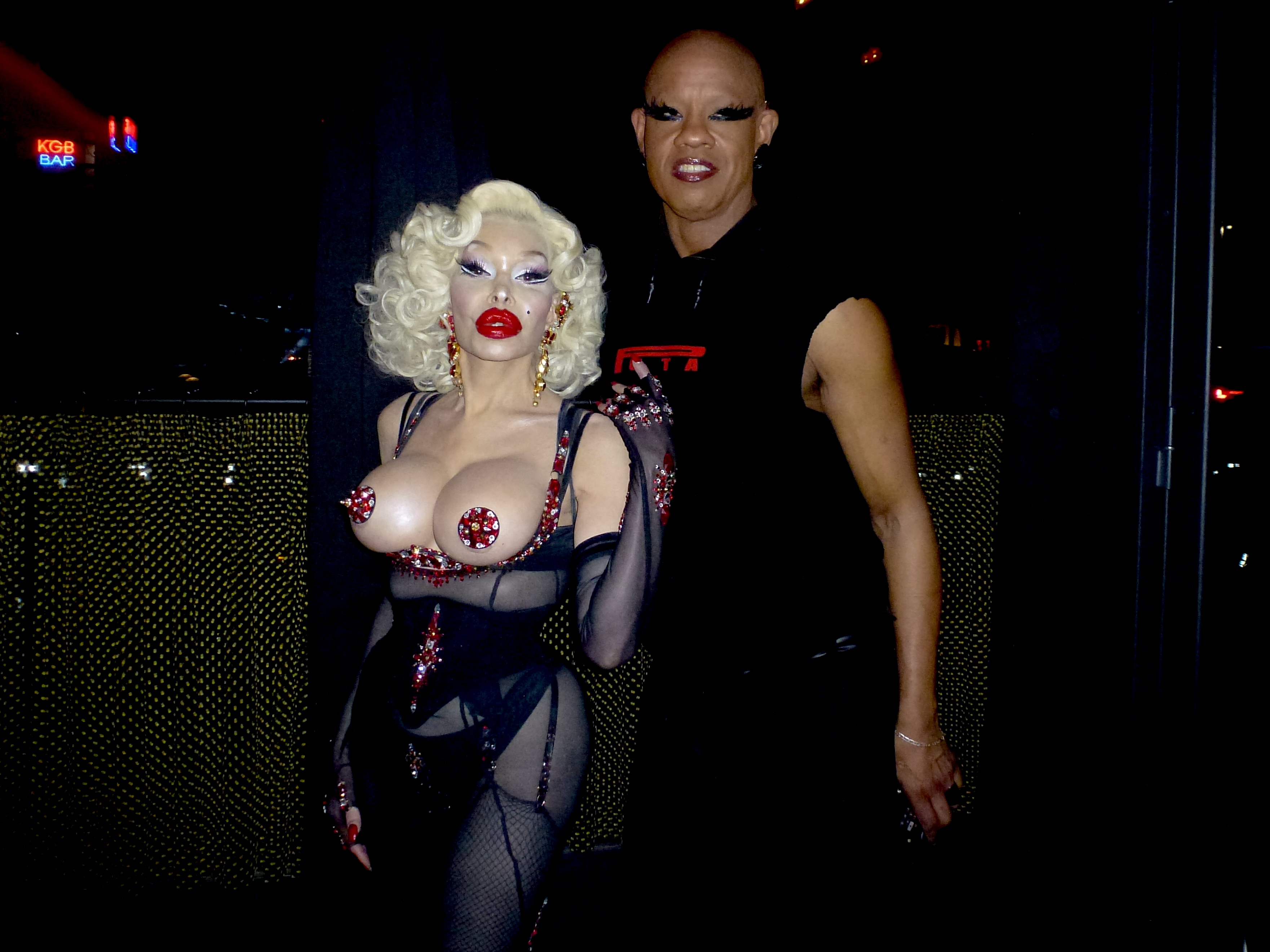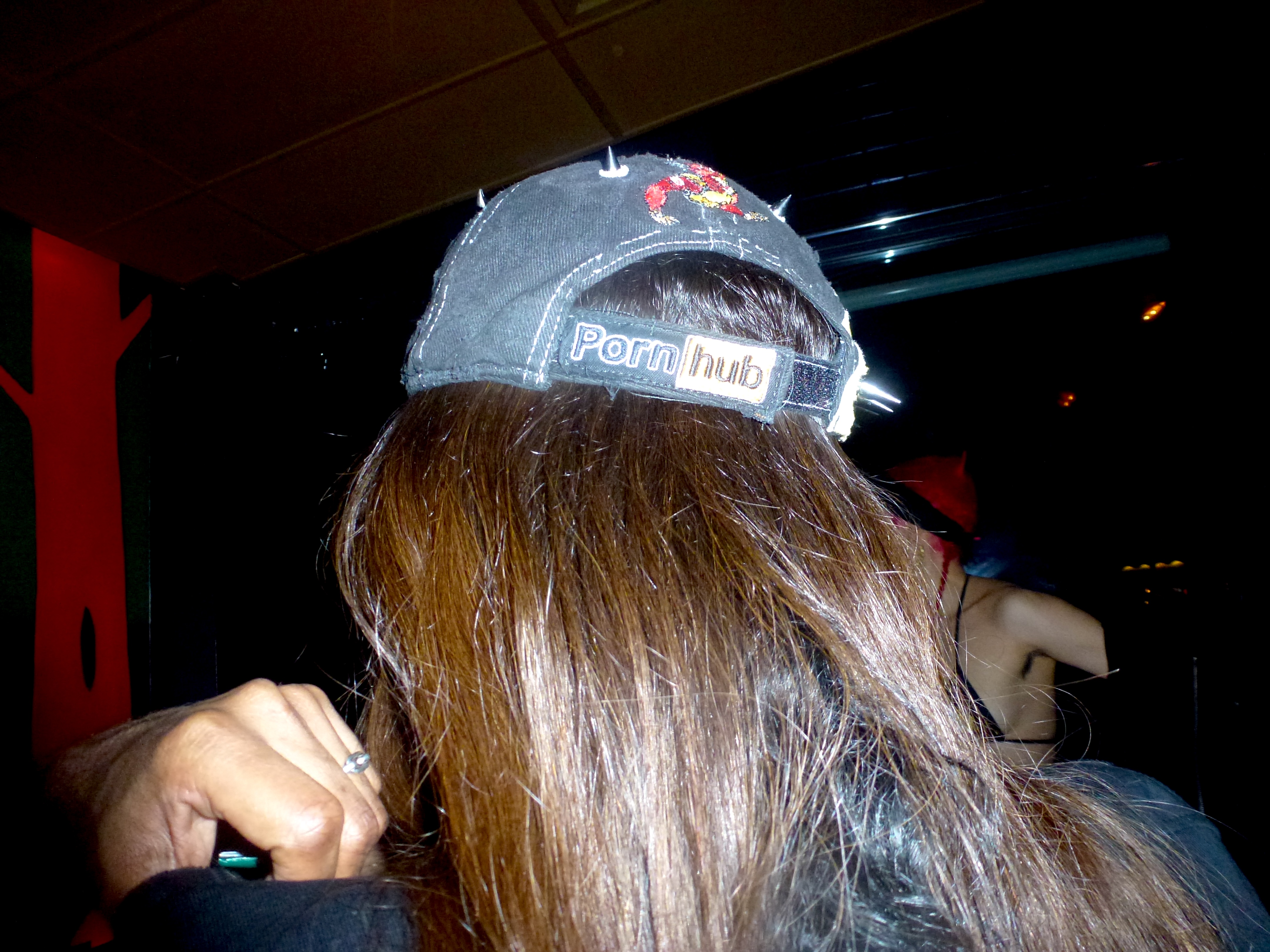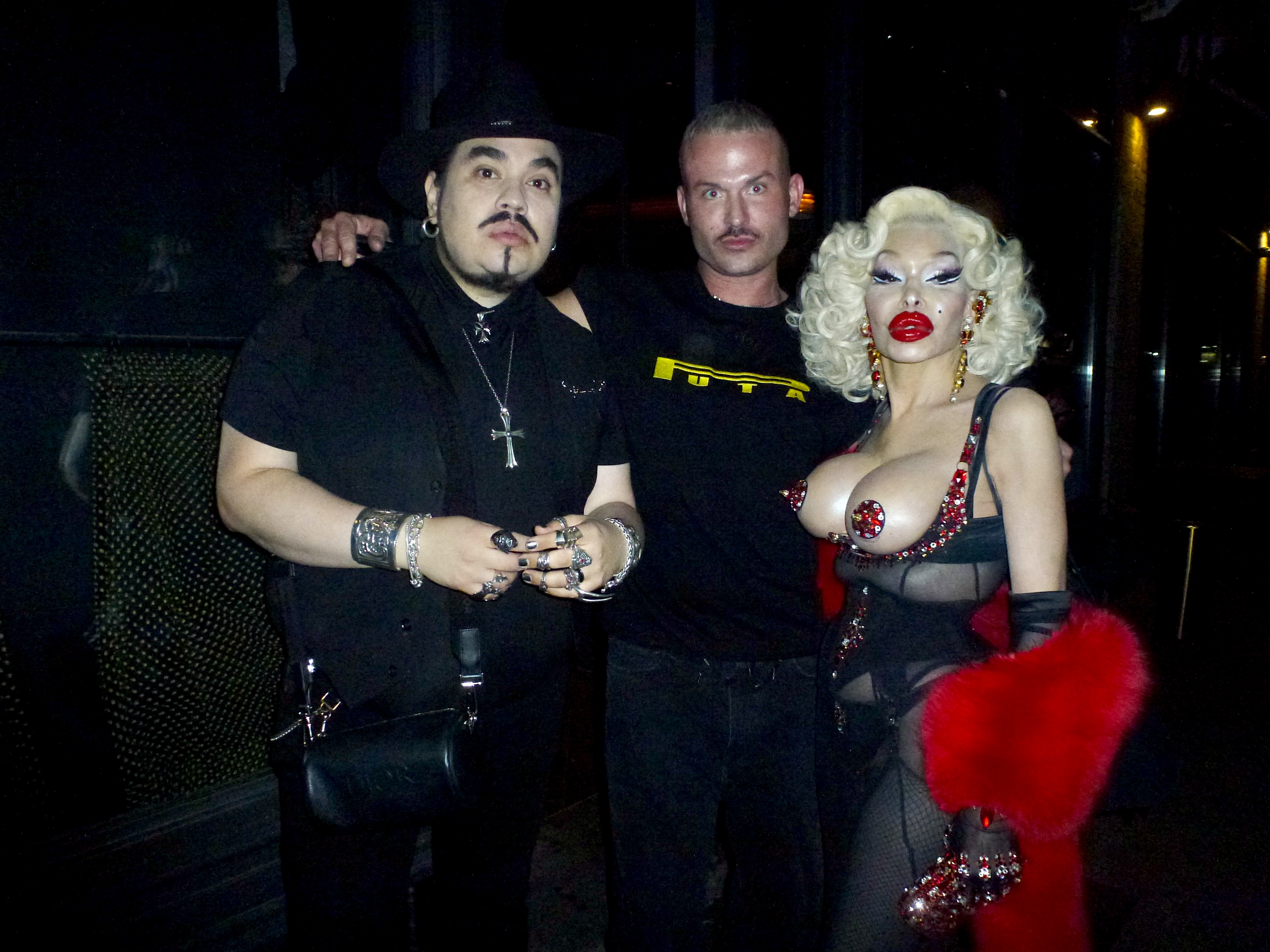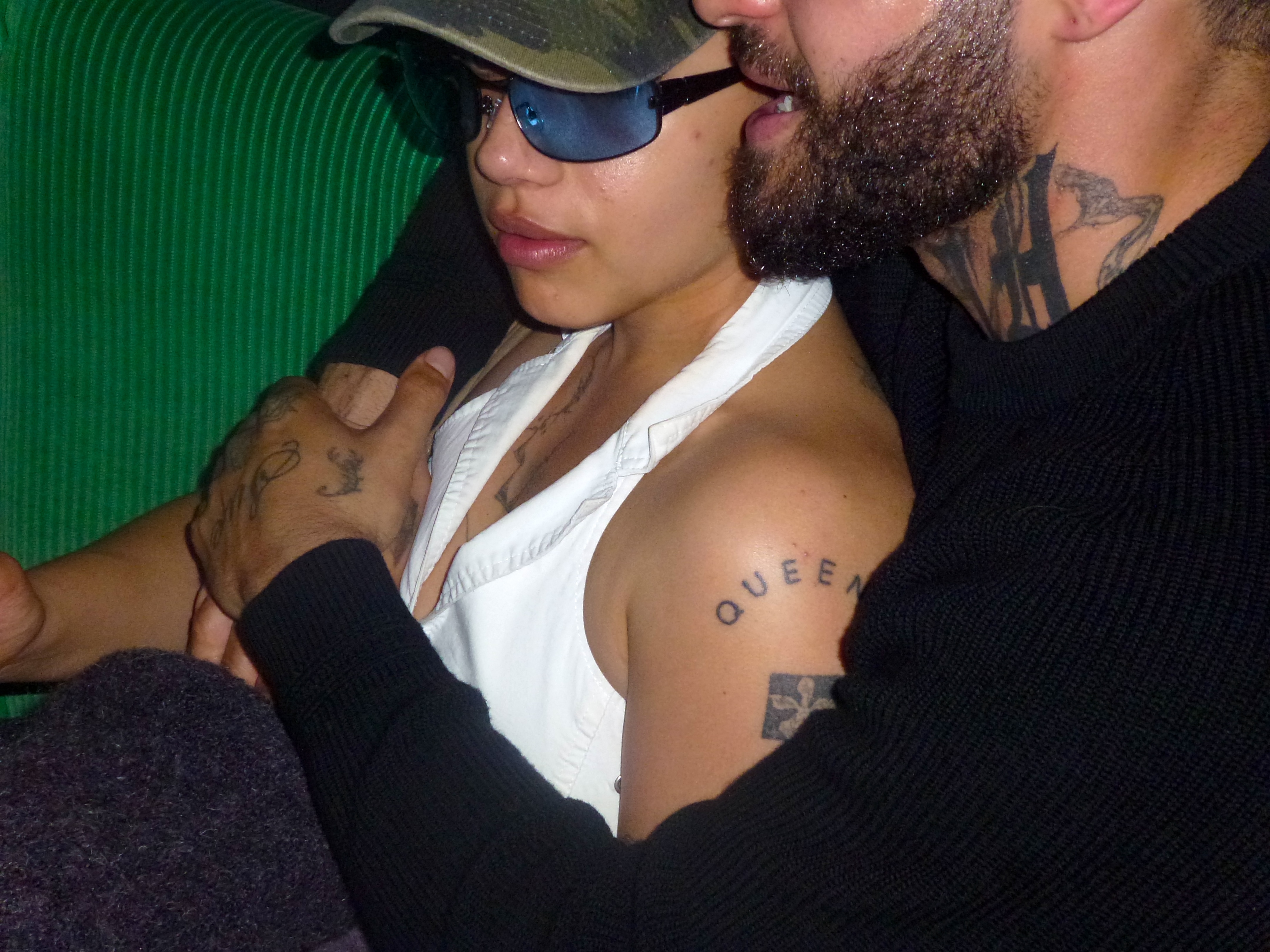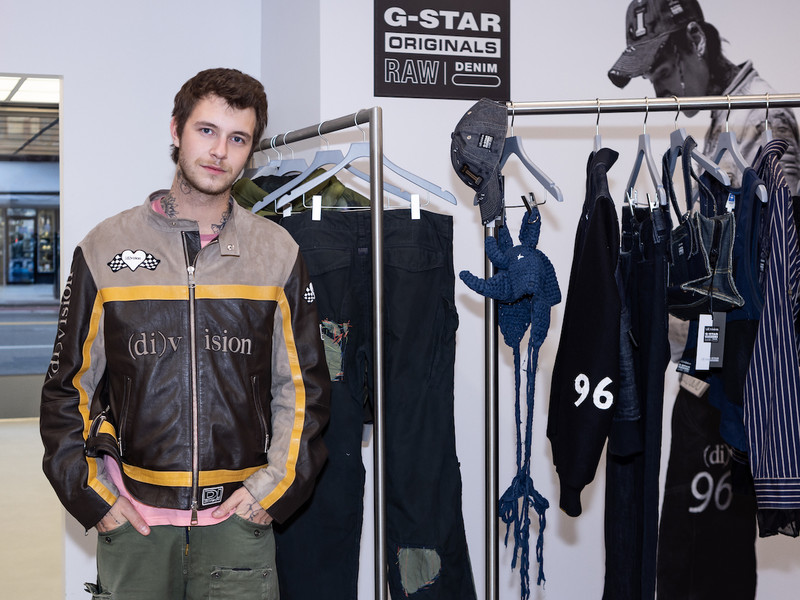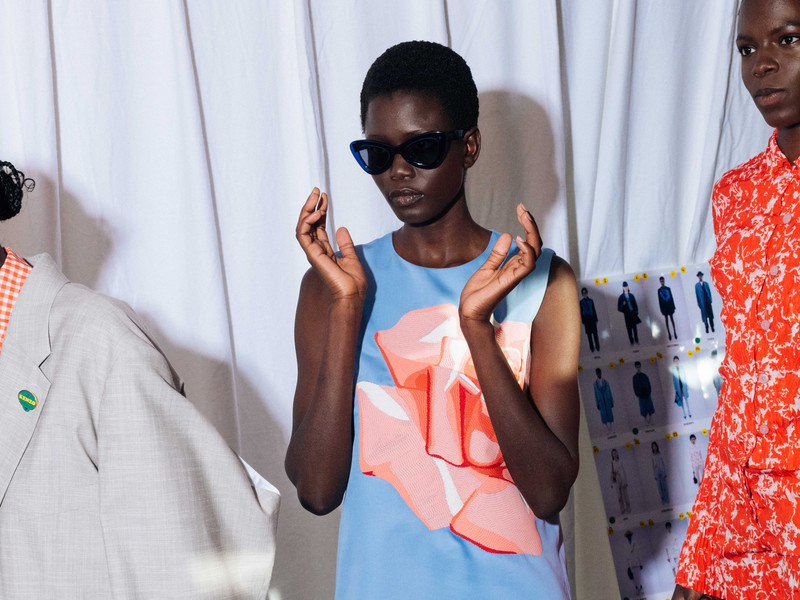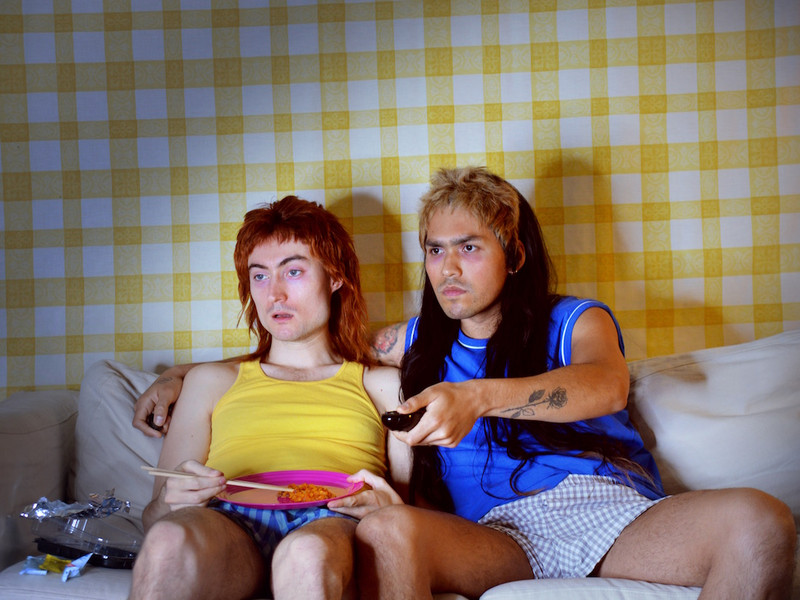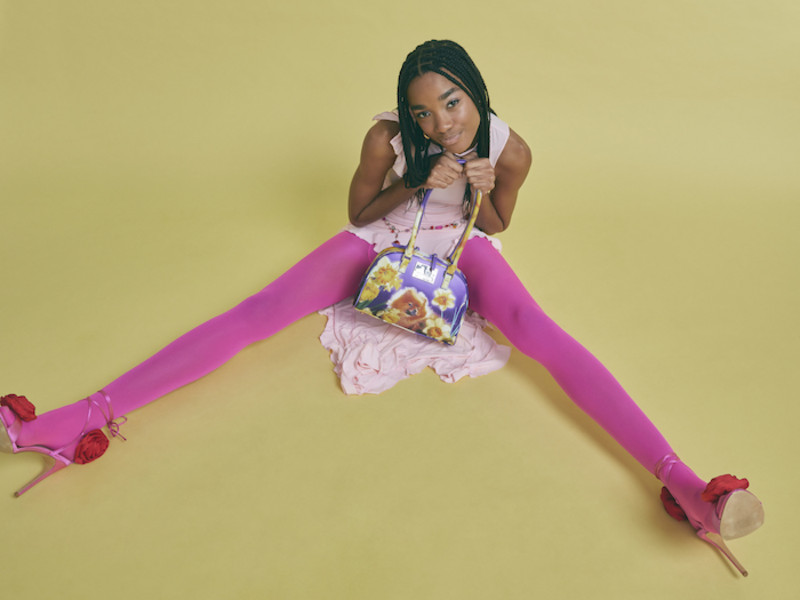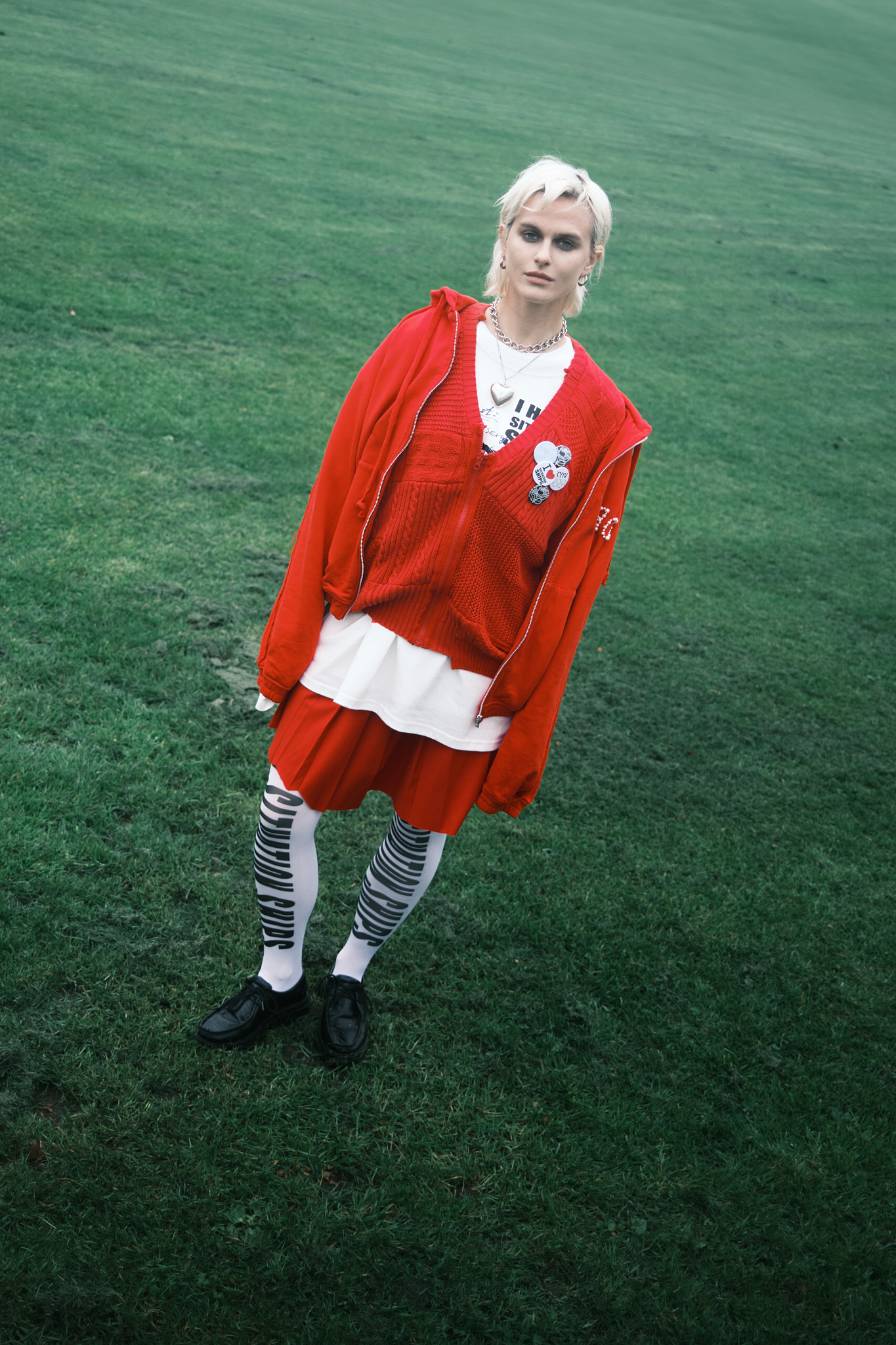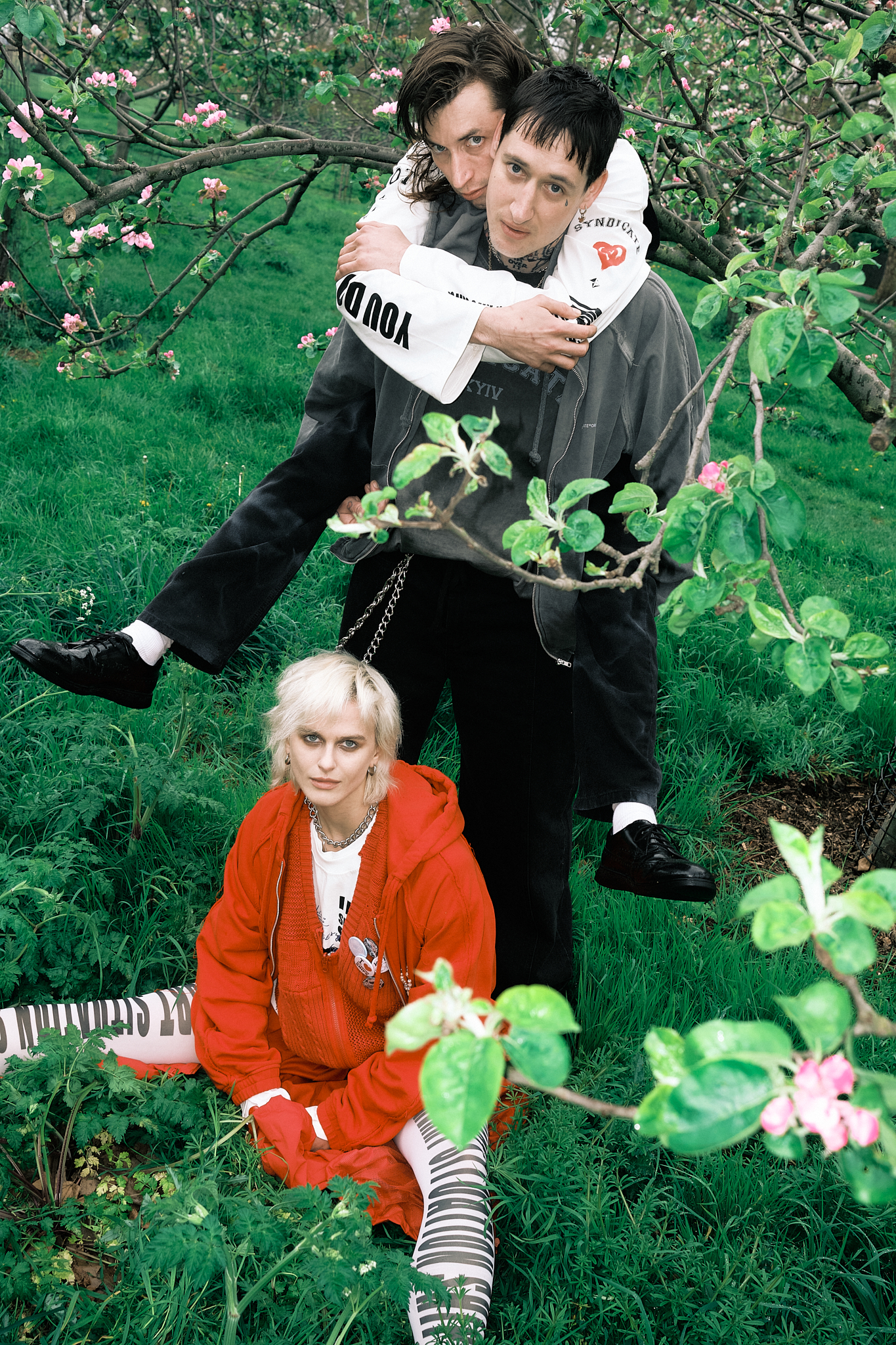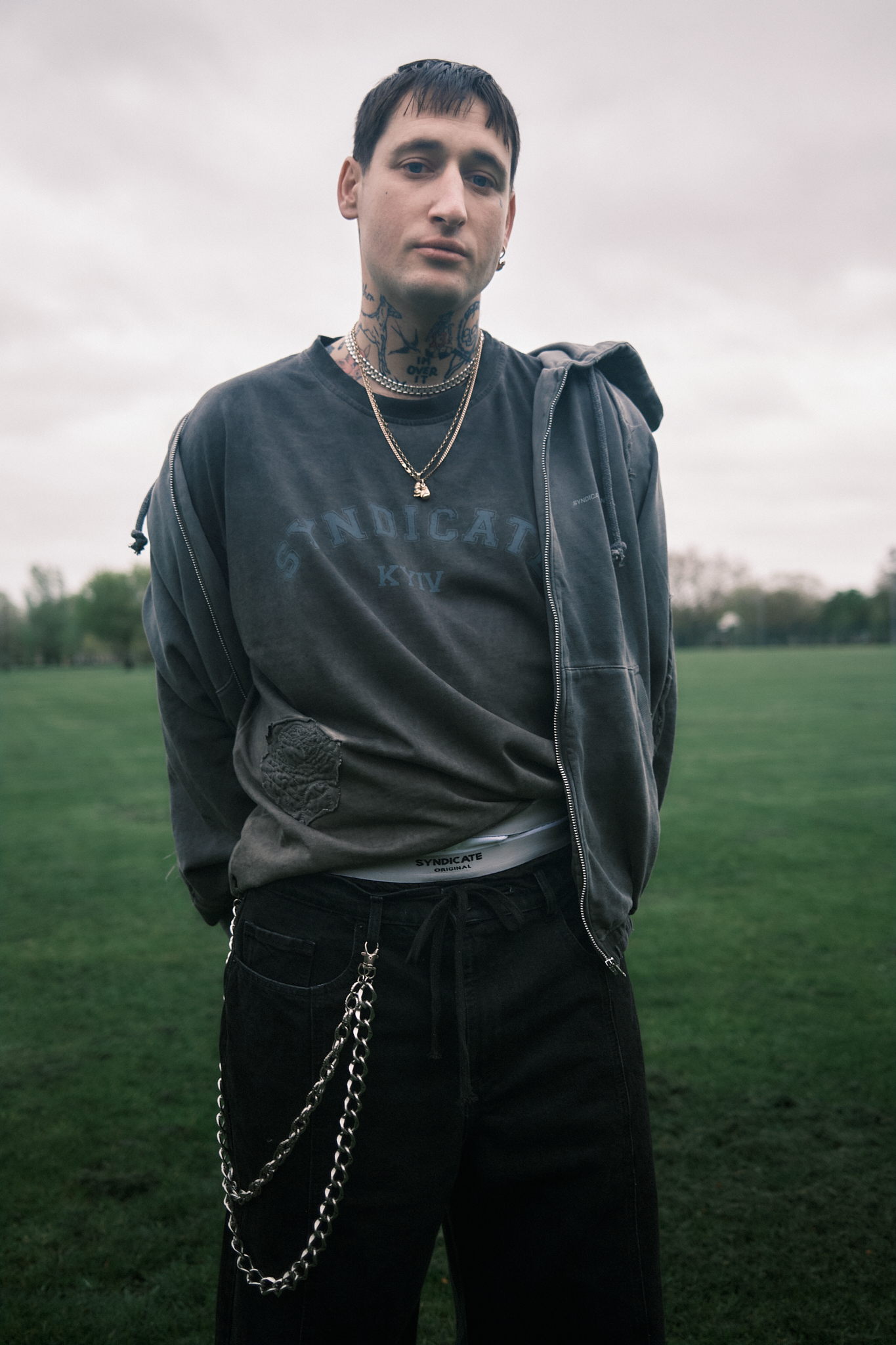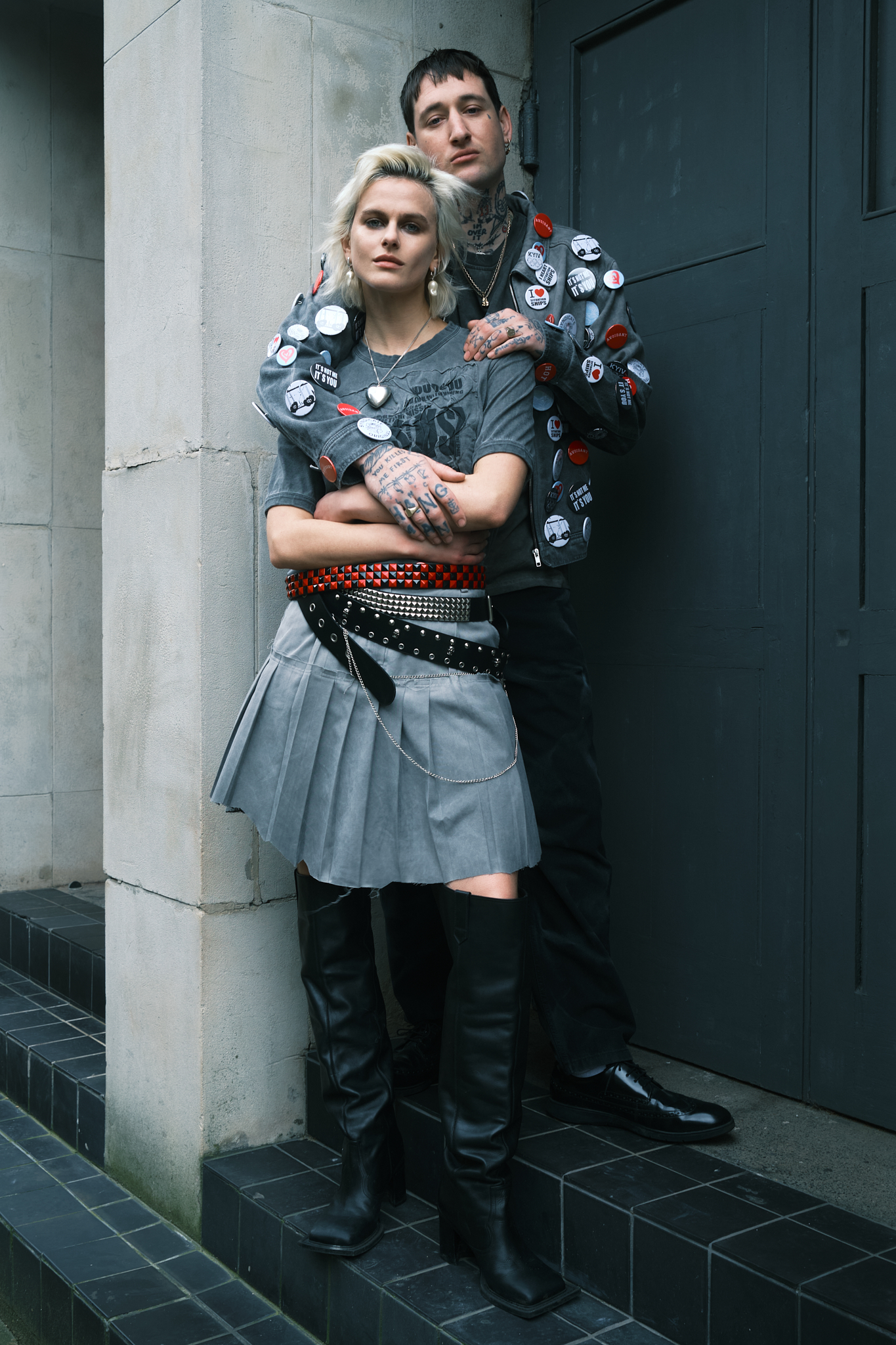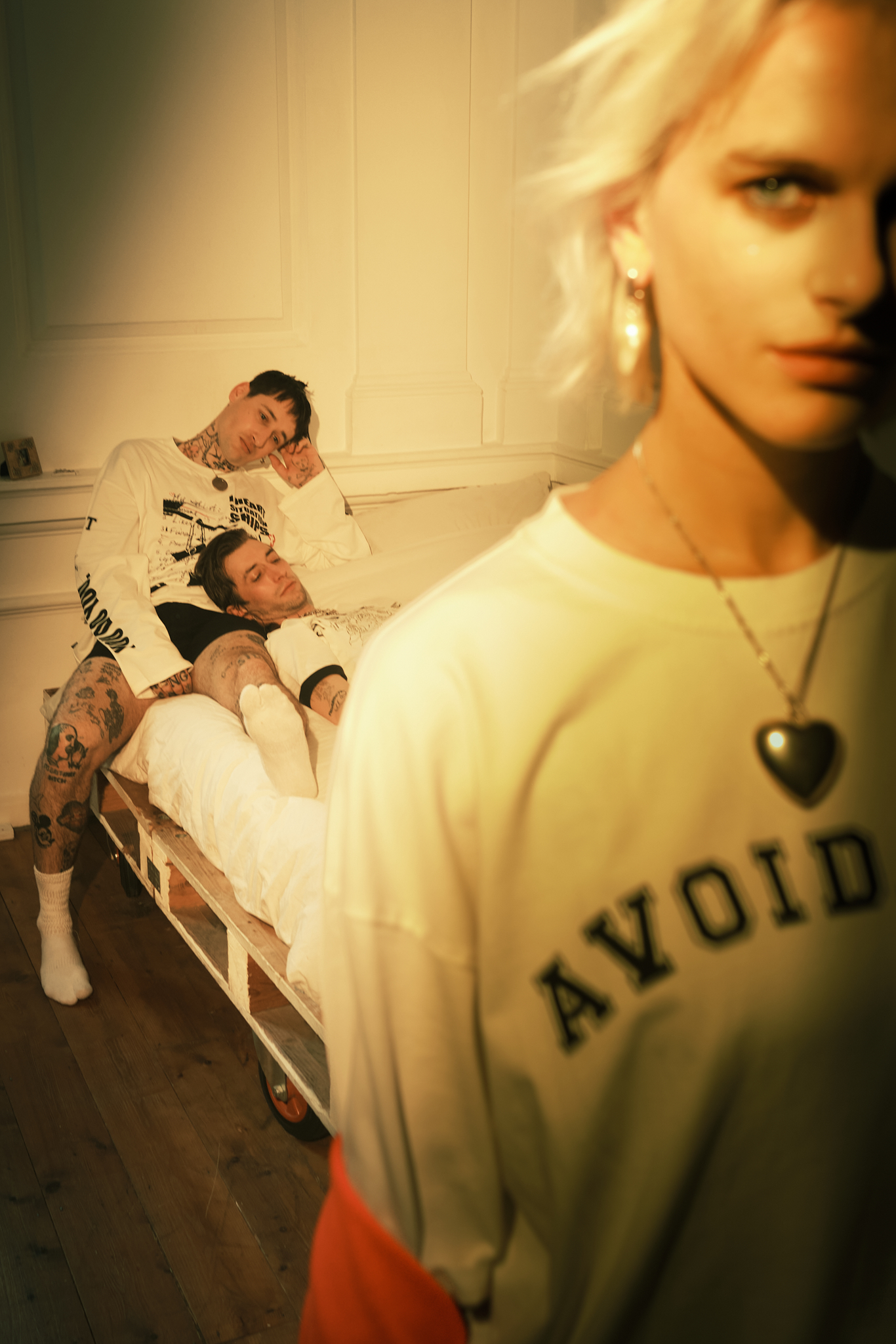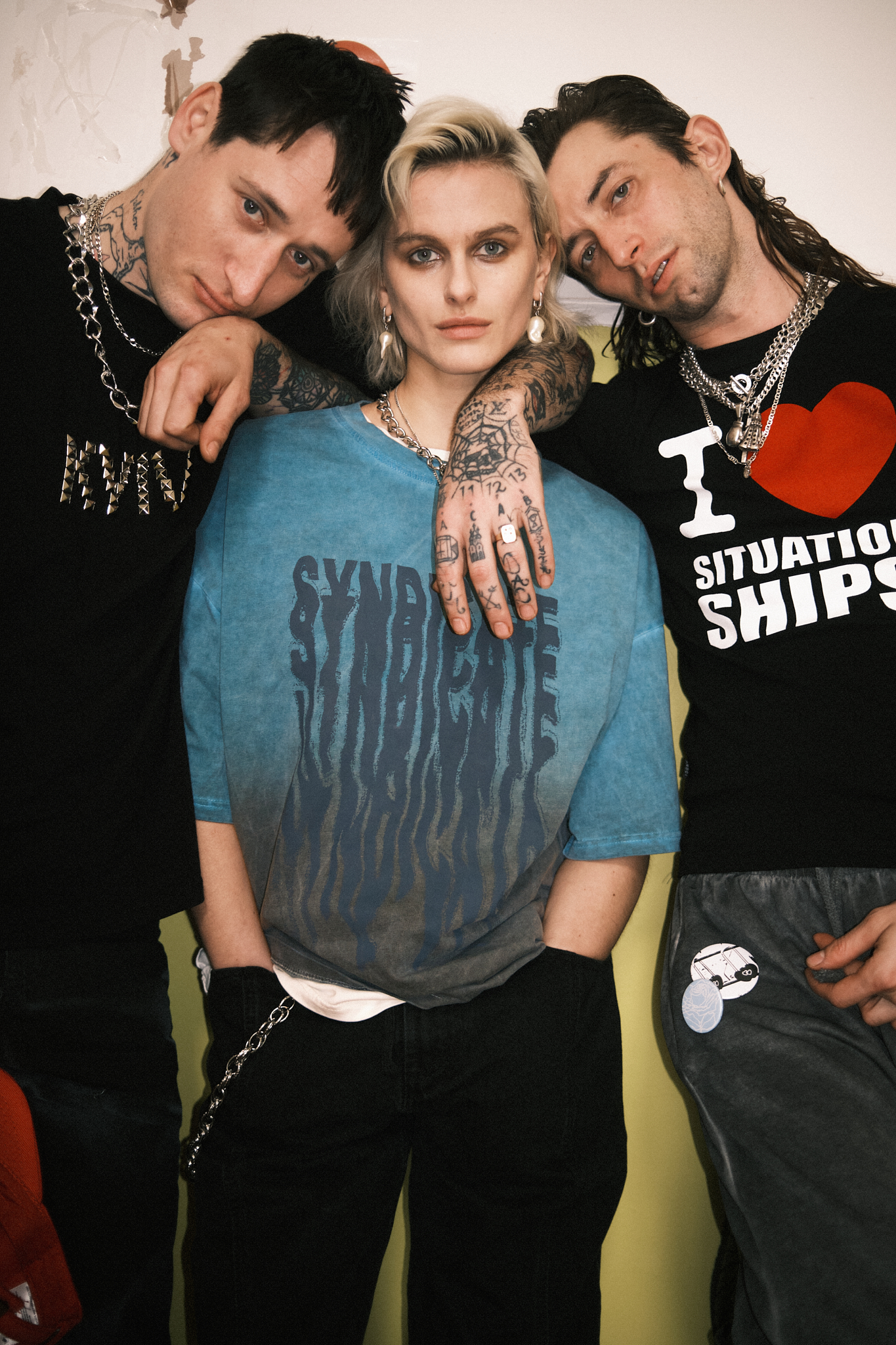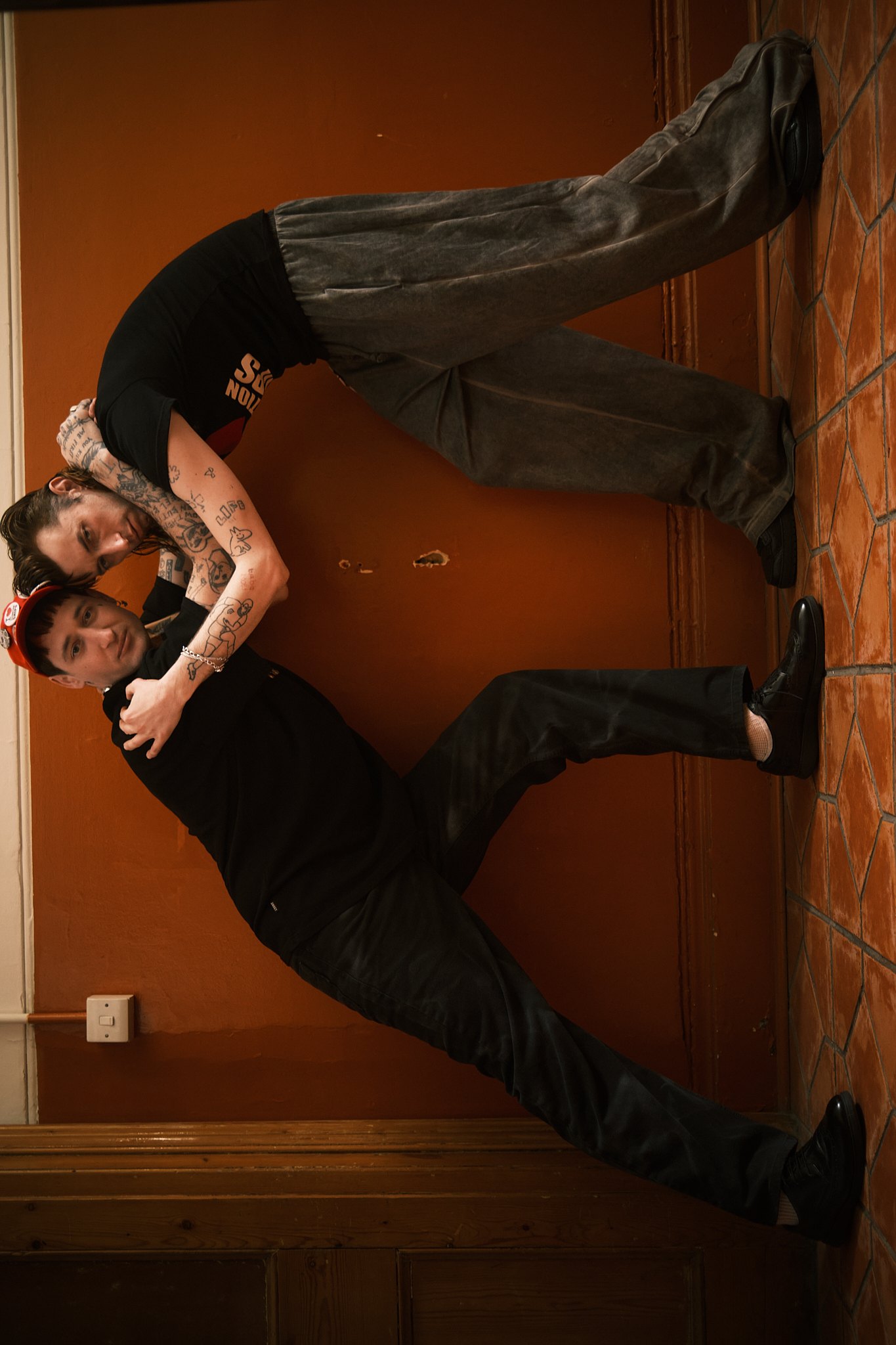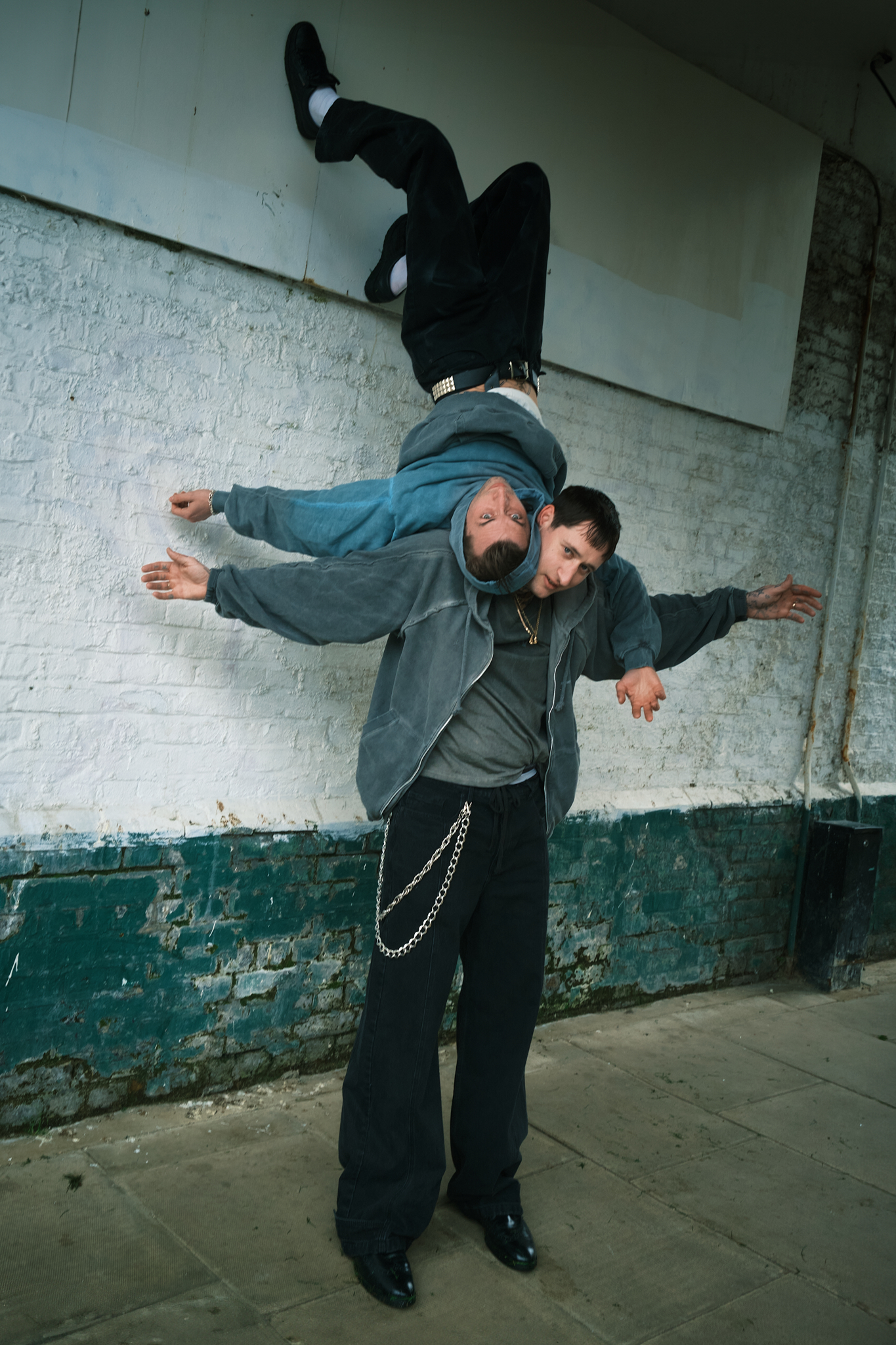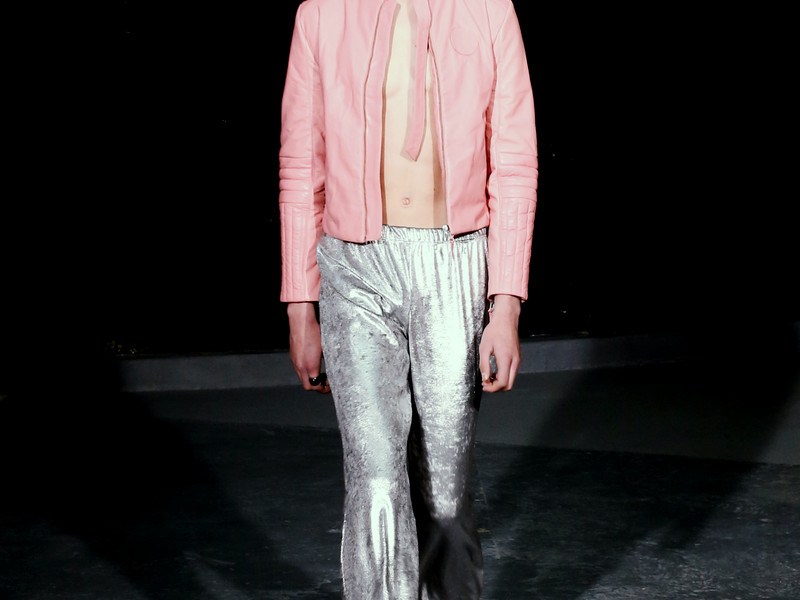Another Success for Sander Lak
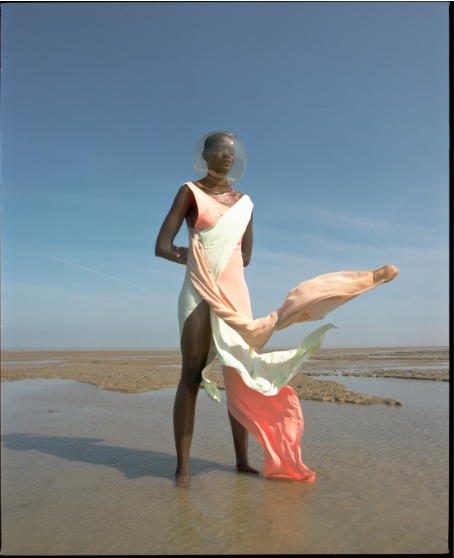
Rejecting this one-note ethos of supposed mediocracy, he eventually made his way to the US with aspirations of fashion stardom and commercial success, unabashedly hoping to establish his practice as a, “massive company that follow[s] in the footsteps of Ralph Lauren, Armani, Tommy Hilfiger and Calvin Klein.”
While we wouldn't ever need to explain ourselves for offering a re-emergence of the issue 8 designer special we dedicated to Lak, today the throwback comes with the addition of celebratory spirit. Last night, Lak won the prestigious CDFA's Swarovksi Award for Emerging Talent, and with this award— its apparent more so than ever before that the designer's dreams are coming to fruition. Find out more from our interview below.
OFFICE — Having full creative control of your own company must be so liberating after almost 10 years of working for others. What has provided the biggest sense of freedom?
SANDER LAK — As soon as I came here and started putting a team together, I started to figure out together with Joey [Laurenti], my CEO, what kind of company we want. What kind of company culture. Forget about the fashion part, forget about the clothes. Just as human beings, how do we want to be with our employees? What kind of bosses do we want to be? All of a sudden I felt like these puzzle pieces that were kind of missing became a complete puzzle of, this is where all my strengths and all my skills start making sense. That was really a realization that Oprah would call an “aha” moment. I was like, “Aha! Okay, now I get it. This is what I’m supposed to do.” I’m in this industry because I love fashion, I love clothes, I love all of that stuff. But I’m also very interested in everything that is around it. I’m also really feeling that I grow as a person, not as a designer, with the way that I can be as the boss towards my employees and the way that I treat them. I try to do it, sometimes I make mistakes and I learn from that. I really feel like that is such an incredible part. It’s, for me, as important and joyful as the designing of the clothes.
O — How would you describe the company culture at Sies Marjan?
SL — We have a very open mentality here, we’re very open with each other. We are very respectful. Even though there is a hierarchy—because there’s no such thing as no hierarchy—it’s a very flexible hierarchy. We all do what needs to be done. The person up here does the same thing that the person down here does. In that way there is kind of a balance there. I do things that are beyond what my title would be, and I think for everyone, that counts. What’s great about that is that you all see on a sort of equal level how much we put into this. I really want people to come here. The people that we hire are open-minded, they don’t have boundaries of “This what I contribute and nothing more, because you’re not paying me for this.” I don’t want bitches and assholes and fashion attitudes. No attitudes whatsoever. I want people that I would want to go have dinner with after, and I want to be friends with. Because in the end, I am here more than anywhere else. I see these people more than my family, my boyfriend, my friends—anyone. So I need to like them, and they need to like me. We need to be able to have open communication and like each other, and respect each other enough to also challenge each other. Nobody’s afraid of me here. I mean, that’s what they say.
O — What do you find is the biggest difference between the American and European work ethic? Do you miss having a month off in August?
SL — That’s something that I didn’t really do, because I really embraced the American way. I was frustrated in Europe sometimes, because of how slow things worked. There’s something really beautiful about that, but also something frustrating when you’re wanting to get things done. I was like, Yes, I can get things done. I can call someone at nine in the evening and be like, “This is what I want.” Whereas in Europe I would never do that. I really grabbed that by the balls and I was ready for it. Then all of a sudden I was like, Shit, OK, this is not really helpful.
O — The landscape of fashion is beginning to change, in terms of openness and acceptance of all sizes and genders. Have you felt pressure to make clothing that embraces this?
SL — Yeah, that’s very, very complicated.
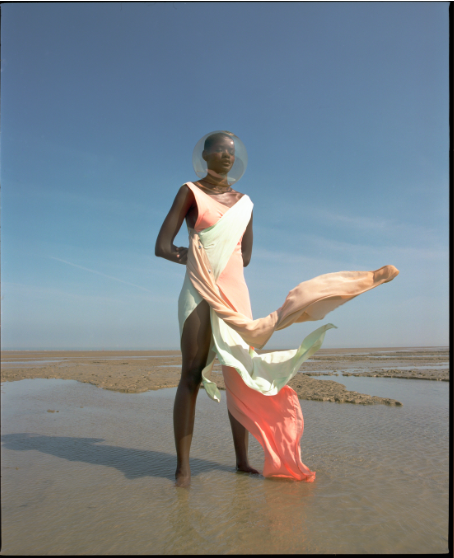
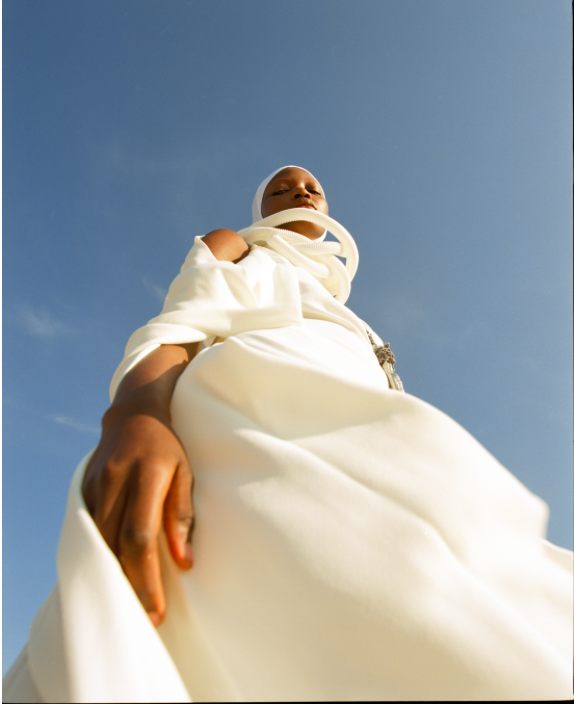
O — How do you address it?
SL—Well, you try.You try to be as open in that way as you can. The problem is that when you are selling around the world, which we are, there is a very, very extreme difference in body sizing when you go from East to West, up and down in the world. That is just a fact. So, your small is sometimes too small for some part and too big for another part of the world. There it gets very, very complicated. I wish I had an answer to that. We just kind of have to go with what we think is the style that might work better in that market, so let’s make it smaller. And then this one is better for this one, so let’s make that “small” bigger. But you’re always missing something. You have to be an H&M or a Zara and have that big of a collection, that big a volume, to really address every body shape. For us, that’s just not possible. But we try, and we make mistakes. Sometimes we’re successful and sometimes we’re not. I’m a customer myself. I may not be a woman, but I love fashion. I buy stuff. I wear things. I wear fashion. I spend money on it. I really feel disappointed when I try something on and it just doesn’t work on me. You can never 100% get rid of that because everybody is different, sizing is different. But I try to find a way where the experience of putting it on yourself is almost better than the fantasy of the model on a catwalk.
O — Your collection has drawn a lot of attention for your bold use of color, which is not a typical New York thing at all.
SL — As soon as people put it on, they feel differently about themselves. I think a lot of that has to do with the shape on one hand, but especially on color and material. As soon as you put a color on your body, it makes you feel different. What we’ve really noticed is that a lot of people are, all of a sudden, rejecting this idea of no color. As soon as they experience a Sies Marjan moment they’re like, “I never want to wear black again.” Or, “I never want to wear just beige, you know?” I think that’s something that takes time, but we are really getting these results. We are getting people that are like, “I never wore yellow, but your yellow works on me. Every time I wear it people come up to me and say, ‘Oh my god, what is this?’” I hear it all the time. I think that’s really great.
O — You grew up all over the world, with such a mix of cultures. Has your international upbringing influenced your design aesthetic or your vision?
SL — I don’t think it has directly influenced my design aesthetic, I never get inspired by places or by things, really. It’s really strange. It’s not like my childhood in Asia and Africa inspired me to make my collections. But it makes me who I am.Who I am is who I am as a designer, too. As an example, this flexibility and openness towards differences in culture, being very easy and adapting. I was born in that situation, for me that’s such a natural thing. I come somewhere, I analyze, I look around, and I’m like, OK this is what the culture is, this is where I’m going to have problems, this is where I can be. It takes me a week or two and then I can kind of adapt to that. It’s in my nature. That, translated to my work, is very much why I was able to adapt my drawings, for example. Because I adapt very quickly to new surroundings and new situations. In that way, it definitely shaped me.
O — You’ve had a great response from the fashion press for such a young brand. To what do you attribute this relatively swift rise in acclaim?
SL — As soon as you let go of the pressure of succeeding, it’s like relationships—as soon as you let go of wanting to be in a relationship, then it happens to you. That’s a little bit what happened with us as well. As soon as we let go and were like, without any religious thing about it, “Fate will guide us, the reality of now will take us wherever it needs to take us.” And that’s not something that we calculated.
O — And you’re embracing this whole American thing.
SL — Yeah, because I can watch an episode of Veep, which is highbrow, and then I can watch a shitty comedy. For me, there’s no high or low—it’s all one thing. There are so many T V shows that I love. It never directly inspires me, but I think there is something about exposing these worlds. It’s like traveling in a way. Especially with TV because there are thirteen hours of episodes and you see these characters, you see these storylines, you kind of feel what it’s like to live in, for example, Fargo...where is it?
O — It’s in North Dakota.
SL — Exactly. Or, you’re in Hollywood in the ‘60s, or ‘50s. You travel in a way, which is really incredible.
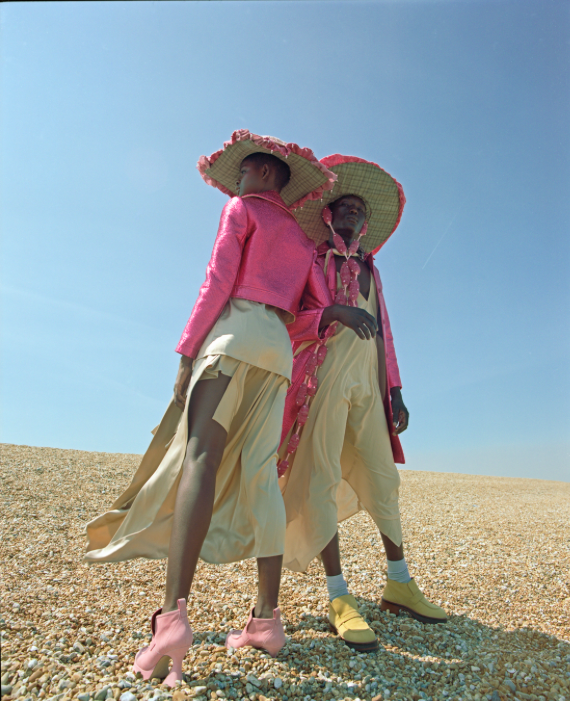
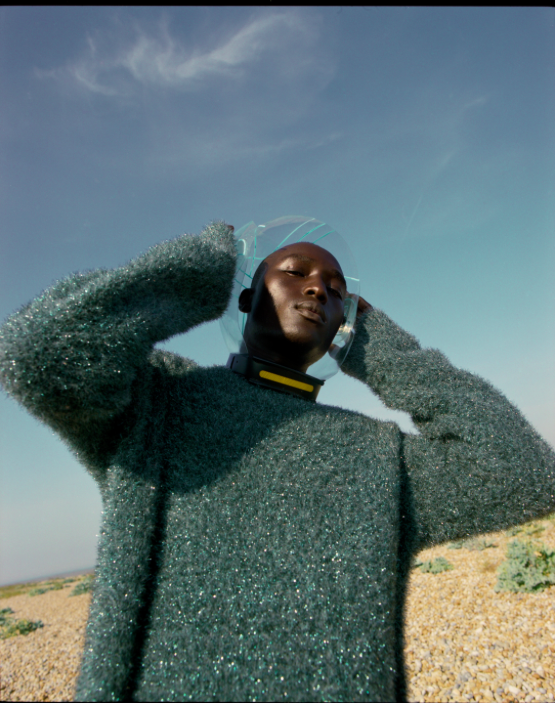
O — So, what gets you up in the morning?
SL — There’s almost nothing that I can really complain about, so getting up in the morning is a joy, really. That sounds very Pollyannaish or happy-go-lucky, but it’s true. I never forget that. I do exactly what I want. I work with people that I completely trust. We’re a successful company in this day. And you know, our struggles are really interesting. It’s never where I’m like, Oh my god, it’s too much. I’m always like, OK, how do we better ourselves? The compromise there, of course, is that sometimes I over- exhaust myself, or I compromise my personal life by doing too much. But the bigger picture of it, I mean, who knows for how long the world is going to be as it is, so let’s enjoy every single day, every season that we do what we do. I would hate to, worst-case scenario, one day, not be able to do this and then be like, Shit, I should have enjoyed it more. That would be horrible.
O — If you’re not having fun, then why are you doing it?
SL — Yeah, make it count, you know? Every day. It’s all very hippie, Oprah kind of talk but it’s very true. Make it count. You can really try and do something. And it can be something really small. It can be me speaking to one of my sewers and making her laugh, and that’s enough. So she feels happy at work. That’s already an amazing Wednesday to have. The rest of the day can be shit. Just those little moments, but you have to be kind of aware of that.
O — How did you end up in fashion?
SL — Well, it’s kind of because I didn’t get into film school. That’s really the reason. Because I wanted to be a film director—I mean, I had this idea that fashion existed, but it was very abstract still. Film school was my dream. I didn’t get in because I was too young. They were like, “We think you have potential but you’re too young. You have to wait a few years.” And I was like, “ What? I’ve just spent seven years in high school, I’m not gonna wait a few years. There’s no way. I’m ready.” So that was it. I was like, Let me go to art school and figure that out. I kind of went into fashion after the first year and I really learned on the go. I didn’t even know what patterns were. I didn’t think there was actual work, then I started realizing there was this whole craft of patternmaking and finishings and materials. So it was a total learning curve. I didn’t grow up with Barbie dolls that I dressed or made evening gowns.
O — What do you love about New York?
SL — I’ve always been an expat, I’ve always been the foreigner, I’ve always been not from here. I think that’s something that really works because nobody’s really from here. Everyone is a foreigner and everyone is somewhat of an outsider. So I really feel at ease here. I already feel fine, because it’s not like I’m “that Dutch person,” I’m just one of the people that is from everywhere and nowhere.
— END
